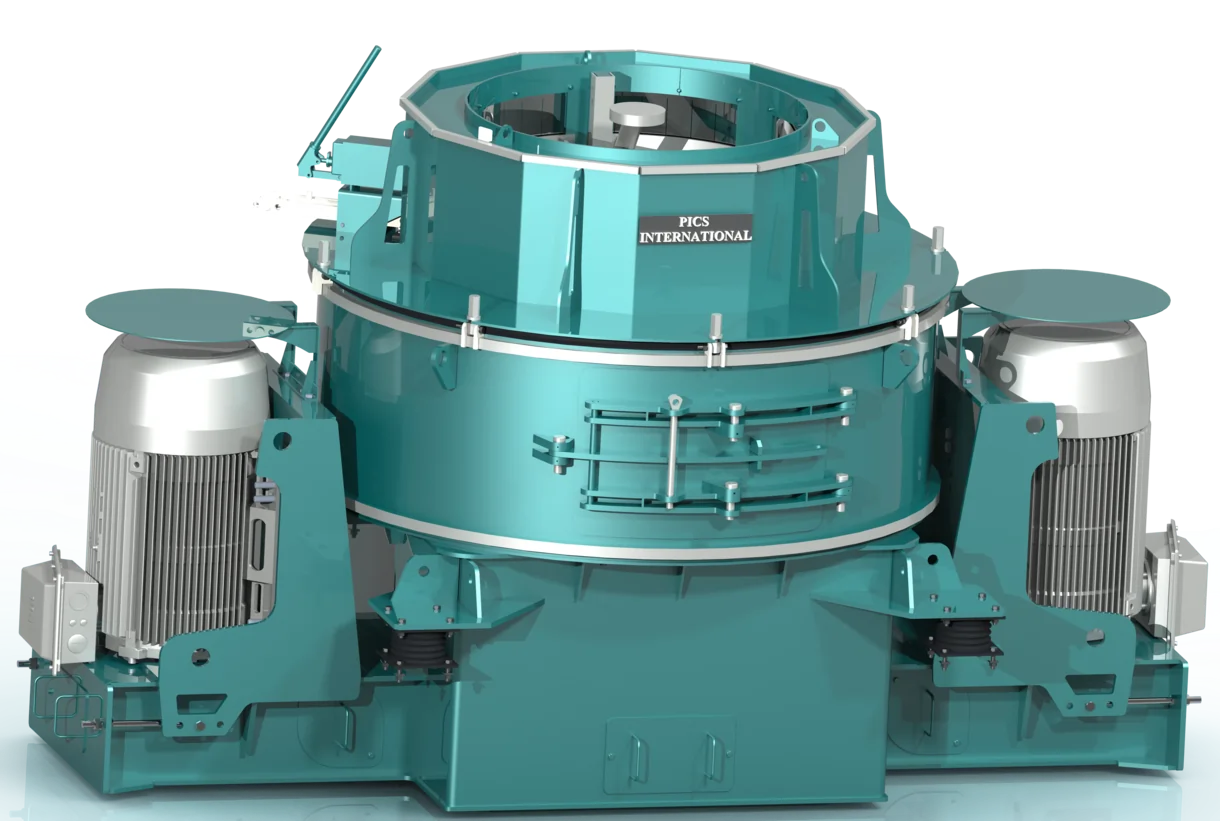Quick Links
Sand making Machine
Sand Making Machine Manufacturer
Sand Making machine is used for manufacturing Artificial sand. Artificial sand is produced by reducing larger pieces of aggregate into sand-sized aggregate particles. Manufactured sand can be manufactured to be a certain grain size that the buyer chooses
There Are two type of Sand making Machine :-
FREQUENTLY ASKED QUESTIONS
FAQ
M-Sand is created using sand making equipment. The term "manufactured sand" (abbreviated "M-Sand") refers to artificial sand created by crushing hard stones into small, angular particles the size of sand, which are then cleaned and finely graded for use as building material. It can be used as a substitute for river sand in building. By crushing strong granite stone, it is made.
Granite rocks are crushed to create it. Crushed rock from deposits of coarse hard rock is divided into several fractions after being crushed in crushers. This procedure produces sand that is further purified by washing and sifting out contaminants and small particles.
The preparation of manufactured sand consists of basic process
- Extracting
- Aggregate crushing
- Screening and sorting
- Air classifying
- Storage and handling
The manufacturing process for M sand takes place in three stages:
- Utilizing vertical shaft impact (VSI) crushers, the first stage entails crushing stones of various sizes into aggregates.
- The material is then fed into a rotopactor in the second step, where the aggregates are crushed into sand with the specified grain size.
- The final step is the removal of minute particles from the sand by washing it after screening to eliminate dust particles.
Sand is a commodity in great demand as a result of the need for new infrastructure and structures brought on by rising urbanisation. Sand production is a method to protect the environment. decrease energy use and make use of aggregate waste by not mining sand from riverbanks and shorelines. Sand shortage, however, is an issue that many nations face, including India. Natural sand, which is found in riverbeds and coastal areas, is becoming insufficient to fulfil the enormous demand, and sand extraction from natural sources has an adverse effect on the environment. M sand, or manufactured sand, has thus arisen as a sustainable alternative.There is a severe shortage of adequate river sand in the majority of the world as a result of the enormous growth in sand demand. The usage of artificial sand has expanded as a result of the shortage of high-quality river sand used in building. The accessibility and affordability of M-Sand for transportation are further factors. The expense of transportation from far river sand beds can be reduced since artificial sand can be cheaply obtained locally and is made from hard granite rocks that can be crushed. As a result, using synthetic sand as an alternative building material can reduce construction costs.
Moving rocks and stones create manufactured sand. For size reduction, it passes through a number of jaw and cone crushers. Making artificial sand has a promising future in the building sector. Artificial sand is in increasingly high demand. Here are a few factors that contribute to India's strong market potential for artificial sand production.
- Right now, manufactured sand is around 50% less expensive than river sand. The price per tonne of river sand for sale is around Rs 1,300. Half the amount is charged for the synthetic sand.
- River sand is unable to satisfy the expanding demand in the building industry. In many regions of the nation, river sand is not sorted adequately. Organic pollutants and excessive silt are present. These might be harmful to the steel's capacity to last in the concrete. There are no biological contaminants or silt in the produced sand..
- It is unsuitable for use in cement concrete because it contains additional impurities including coal, bones, shells, mica, silt, and other things. The concrete's lifespan is shortened by the deterioration of these components. It is as a result of the impacts of weathering.
- Nowadays, the Government has put a ban on lifting sand from River bed.
- Transportation of sand damages the roads.
- Sand removal from riverbeds has an influence on the ecosystem because it causes the water table to rise and eventually dry up.









